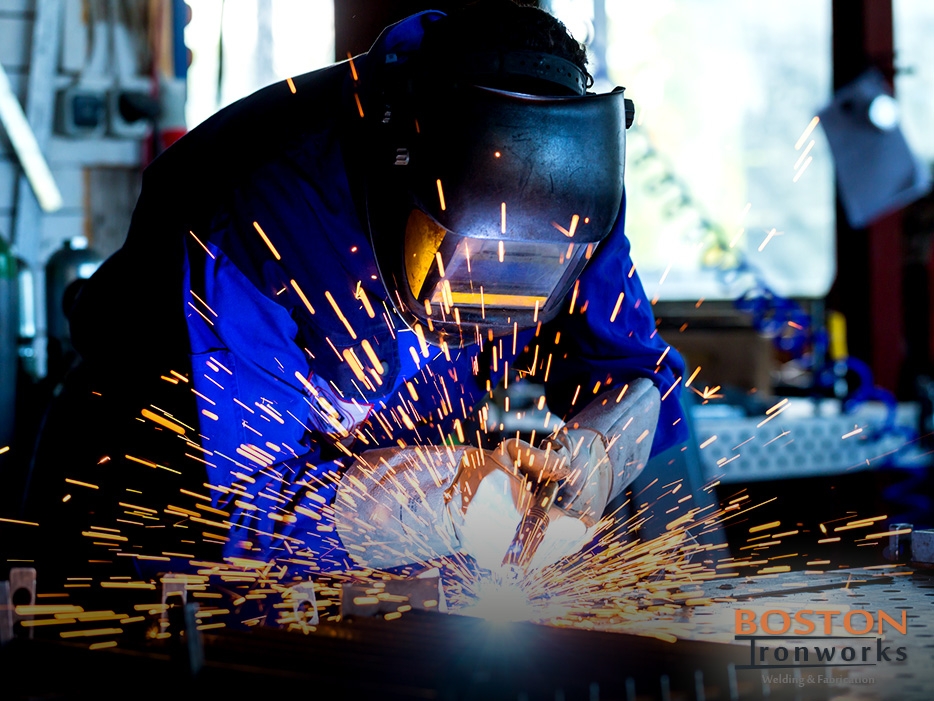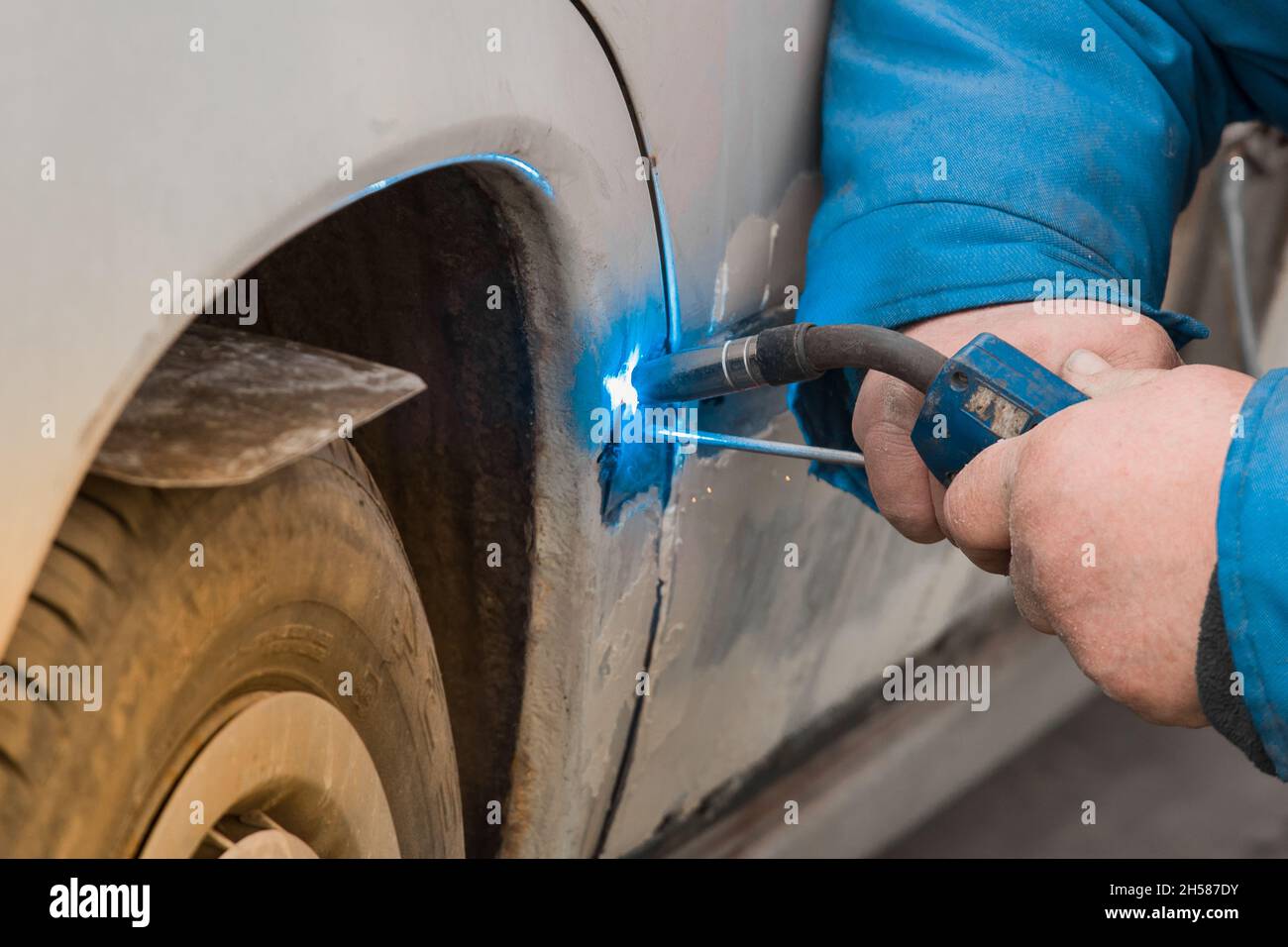Typical Welding Repair Issues and How to Address Them Successfully
Welding repair work frequently run into a series of issues that can threaten the honesty of the end product. Usual issues include inadequate penetration, porosity, and imbalance, to name a few. Each defect offers one-of-a-kind obstacles that require details techniques for resolution. Understanding these issues is necessary for welders aiming to boost their abilities and end results. This discussion will discover these typical welding repair service concerns and effective approaches to address them.
Poor Penetration
Poor penetration happens when the weld metal fails to completely fuse with the base material, leading to weak joints and prospective architectural failures. This problem often originates from insufficient warm input, wrong electrode angle, or inappropriate welding rate. Welders might come across poor penetration due to a mistake of the necessary specifications for a details material thickness or type. Additionally, contamination on the base product's surface area can impede effective bonding, intensifying the problem. To address inadequate penetration, welders should ensure appropriate setups on their equipment and maintain a clean job surface area. Regular evaluation of welds is advised to identify any kind of deficiencies early, enabling timely improvements and the prevention of endangered architectural integrity in welded settings up.
Porosity
Porosity is a typical problem in welded joints that materializes as small gas bubbles trapped within the weld steel. This problem can jeopardize the stability of the weld, resulting in reduced toughness and possible failure under tension. Montana Mobile Welding and Repair Belgrade Fabrication. Porosity usually emerges from contamination, dampness, or improper welding methods, which permit gases to escape right into the liquified weld pool. To attend to porosity, welders need to ensure proper surface prep work, maintain a tidy functioning atmosphere, and utilize suitable welding criteria. In addition, choosing the ideal filler material and securing gas can alleviate gas entrapment. Routine examination and testing of welds can assist identify porosity early, assuring timely restorative actions are taken, therefore maintaining the top quality and dependability of the welded structure
Imbalance
Misalignment in welding can develop from numerous variables, consisting of inappropriate configuration and thermal growth. Recognizing the origin triggers is essential for reliable resolution. Numerous improvement techniques are available to straighten elements and assure structural integrity.
Sources of Misalignment
Welding misalignment typically stems from a selection of underlying issues that can jeopardize architectural honesty. One main reason is incorrect fit-up of elements before welding, which can bring about spaces and unequal surfaces. Variants in thermal expansion during the welding process can likewise cause distortion, particularly if the products being joined have different coefficients of development. Furthermore, inadequate fixturing and securing may stop working to hold elements firmly in place, causing movement during welding. Poorly kept tools, including welding makers and devices, may introduce disparities in the weld grain, more adding to imbalance. Ultimately, operator mistake, coming from inadequate training or experience, can additionally play a significant role in creating misaligned welds.
Modification Techniques Readily Available
Resolving imbalance efficiently needs a mix of corrective strategies customized to the specific issues handy. One common technique is the use of fixtures or jigs to hold parts in the appropriate position throughout welding, making sure consistent placement. Furthermore, pre-heating the products can help decrease distortion and improve fit-up. For substantial misalignment, mechanical adjustment techniques, such as making use of hydraulic jacks or clamps, can be utilized to remedy the position prior to welding. Post-weld warmth treatment might likewise be necessary to soothe stresses triggered by misalignment. Finally, careful examination and change throughout the configuration phase can protect against imbalance issues from ending up being considerable issues, advertising a smoother welding process and boosting total architectural integrity.
Distortion
Distortion is a common difficulty in welding that can emerge from numerous factors, including uneven cooling and heating. Understanding the reasons for distortion is important for implementing effective prevention techniques. Resolving this problem not just boosts structural integrity however also boosts the general quality of the weld.
Reasons for Distortion
When subjected to the extreme warm of welding, materials usually go through adjustments that can bring about distortion. This phenomenon mainly develops from thermal development and contraction throughout the welding procedure. As the weld location heats up, the material expands; upon cooling, it gets, which can create interior stresses. On top of that, irregular heating throughout a workpiece can aggravate these tensions, causing bending or flexing. The sort of product additionally plays a significant role; metals with varying thermal conductivity and coefficients of expansion might respond in different ways, bring about uncertain distortions. Inadequate joint design and inadequate fixturing can contribute to imbalance during welding, raising the probability of distortion. Comprehending these causes is important for reliable welding repair service and avoidance strategies.
Avoidance Techniques
Effective prevention methods for distortion throughout welding focus on managing warmth why not look here input and guaranteeing proper joint layout. Keeping a constant heat input aids to minimize thermal expansion and contraction, which can cause distortion. Making use of methods such as pre-heating the work surface can also reduce the temperature level slope, advertising consistent heating. In addition, picking proper joint designs, such as T-joints or lap joints, can improve security and decrease tension concentrations. Applying correct fixturing to secure the work surfaces in position even more help in maintaining alignment throughout the welding procedure. Finally, staggered welding series can distribute warmth more equally, avoiding localized distortion. By using these techniques, welders can greatly lower the possibility of distortion and enhance the total quality of their welds.
Breaking
Breaking is a typical issue experienced in welding fixings, typically arising from various aspects such as improper air conditioning prices, material choice, or insufficient joint preparation. The incident of splits can considerably jeopardize the integrity of the weld, leading to potential failures throughout procedure. To resolve this problem, welders have to initially analyze the origin, making certain that products are suitable and suitably selected for the particular application. In addition, controlling the this content air conditioning price during the welding procedure is important; quick cooling can induce tension and result in splitting. Proper joint layout and preparation also add to lessening the threat. Implementing these strategies can enhance weld high quality and sturdiness, ultimately minimizing the chance of cracking in finished weldments.

Incomplete Combination
A substantial problem in welding repairs is incomplete fusion, which occurs when the weld metal does not properly bond with the base material or previous weld passes - Belgrade Fabrication. This flaw can result in weak points in the joint, potentially jeopardizing the stability of the welded framework. Elements contributing to incomplete combination consist of not enough warm input, inappropriate welding method, and contamination of the surface areas being joined. To address this problem properly, welders must ensure proper pre-weld cleaning and surface area prep work, as well as change their welding criteria to attain sufficient penetration and blend. Routine inspection during the welding process can additionally help identify incomplete fusion early, permitting timely restorative measures to boost the general top quality of the weld
Overheating
While welding repair work can improve structural stability, overheating provides a substantial difficulty that can cause material destruction. Too much heat during welding can modify the mechanical residential or commercial properties of metals, causing lowered stamina, boosted brittleness, and warping. This phenomenon is especially vital in high-stress applications where structural integrity is critical. Recognizing getting too hot can entail aesthetic evaluations for staining or distortion, along with keeping an eye on temperature level during the welding procedure. To minimize the dangers connected with getting too hot, welders ought to employ appropriate techniques, such as controlling heat input, readjusting travel rate, and utilizing appropriate filler products. Additionally, applying pre- and post-weld warm treatments can help restore product residential properties and improve the general top quality of the repair service, making sure long-term performance and security.
Regularly Asked Inquiries
What Are the Common Indicators of a Welding Problem?

Exactly How Can I Evaluate My Welds for Top quality?
To check welds for high quality, one can make use of visual assessments, ultrasonic screening, and radiographic techniques. Each technique ensures structural integrity, determines problems, and confirms adherence to defined criteria, eventually boosting the dependability of the bonded joints.
What Security Safety Measures Should I Take While Welding?
When welding, one need to prioritize safety by putting on suitable personal safety equipment, guaranteeing appropriate air flow, safeguarding flammable materials away, keeping a clean workspace, and being conscious of environments to stop accidents and injuries.
Can I Fix a Weld Without Remodeling the Entire Joint?
Fixing a weld without redesigning the whole joint is possible, relying on the damage (Montana Mobile Welding and Repair Fabrication). Techniques such as grinding, including filler material, or making use of a welding procedure can effectively resolve certain flaws while protecting the bordering framework
What Devices Are Vital for Effective Welding Fixes?
Essential tools for reliable welding repair work consist of a welding machine, cable brush, grinder, protective equipment, clamps, and filler materials. Each device plays an important role in ensuring top quality and safety and security throughout the repair work procedure. Porosity typically arises from contamination, wetness, or inappropriate welding techniques, which enable gases to run away right into the liquified weld swimming pool. Inadequately maintained tools, consisting of welding machines and tools, may present disparities in the weld bead, additional adding to misalignment. When subjected to the intense heat of welding, materials usually go through adjustments that can lead to distortion. Splitting is a typical issue experienced in welding repair services, often resulting from various elements such as improper cooling rates, material selection, or poor joint prep work. A significant issue in welding repair work is insufficient blend, which happens when the weld metal does not adequately bond with the base product or previous weld passes.